---
title: Building Full Stack apps in minutes with Anything
subtitle: Go from Text prompt to Full-Stack Database backed applications in minutes with Anything
author: dhanush-reddy
enableTableOfContents: true
createdAt: '2025-03-12T00:00:00.000Z'
updatedOn: '2025-03-12T00:00:00.000Z'
---
The landscape of application development is rapidly changing, with AI-powered tools empowering even non technical users to build faster and more intuitively than ever before. Imagine describing your app idea in a simple conversation and watching it materialize in seconds, complete with a fully functional database. This is now possible with [Anything](https://www.createanything.com) (formerly [Create](https://create.xyz)), a text-to-app builder that works with out-of-the-box support for 50+ integrations such as Stripe, ElevenLabs, Google Maps, Stable Diffusion, OpenAI, and more.
This guide will introduce you to Anything and demonstrate how you can use it to make building database-backed applications incredibly easy and fast. We'll walk through creating a simple AI Image Generator, showcasing how you can go from a text prompt to a functional, full-stack application.
## Anything & Neon
Anything leverages Neon as the database backend for its AI-powered app development platform. This integration delivers a fully managed database solution, which is fundamental to Anything's rapid app development experience. By abstracting away database complexities, Anything users can concentrate solely on their application's functionality and design.
This experience is immediately apparent during app creation. Neon's instant database provisioning lets users bypass database setup and and focus on developing their application. Neon operates invisibly in the background. To learn more about how Anything uses Neon, see [From Idea to Full Stack App in One Conversation with Anything](/blog/from-idea-to-full-stack-app-in-one-conversation-with-create).
## Prerequisites
Before you start, ensure you have an **Anything Account**. You can sign up for a free account at [createanything.com](https://createanything.com/). The free plan is sufficient to follow this guide.
## Building an AI Image Generator app
This app will allow users to generate images using Stable Diffusion, view them in a gallery, and track download counts for each image. We'll leverage Anything's AI capabilities to build this app in minutes without writing a single line of code.
### Start a new project
1. Navigate to the [Anything](https://createanything.com) website and log in to your account.
2. Click on "New Project" to begin. You'll be presented with the builder interface.

### Describe your app
In the chat window, describe your app idea. For example, you can say, "Create a Stable Diffusion powered image generator. Ensure that image generation history is saved in a database, allowing users to view their past generations."
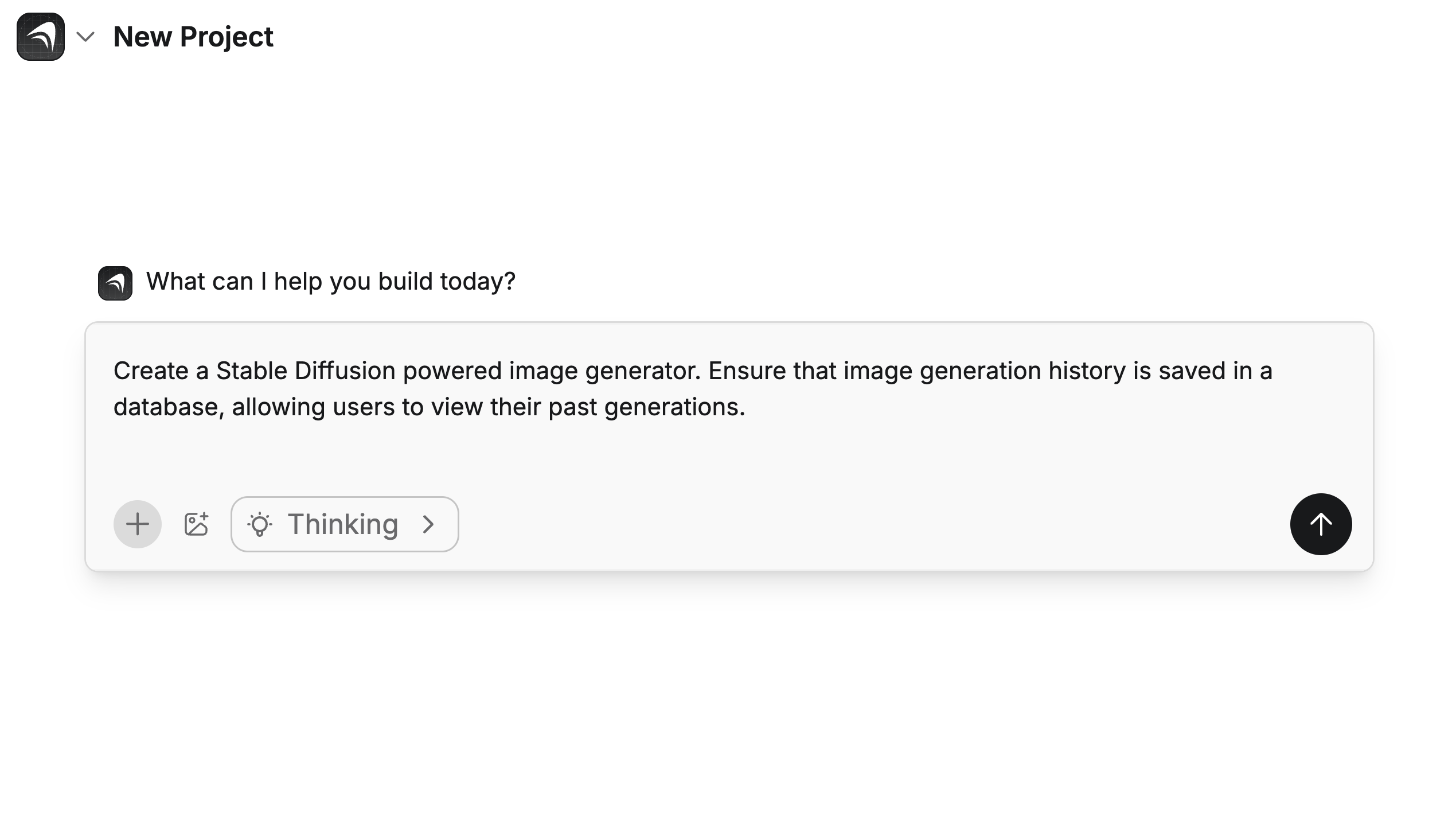
Anything will immediately begin building your app based on your description. You'll see the AI agent working in real-time within the chat window, assembling all the necessary components and code for your application.
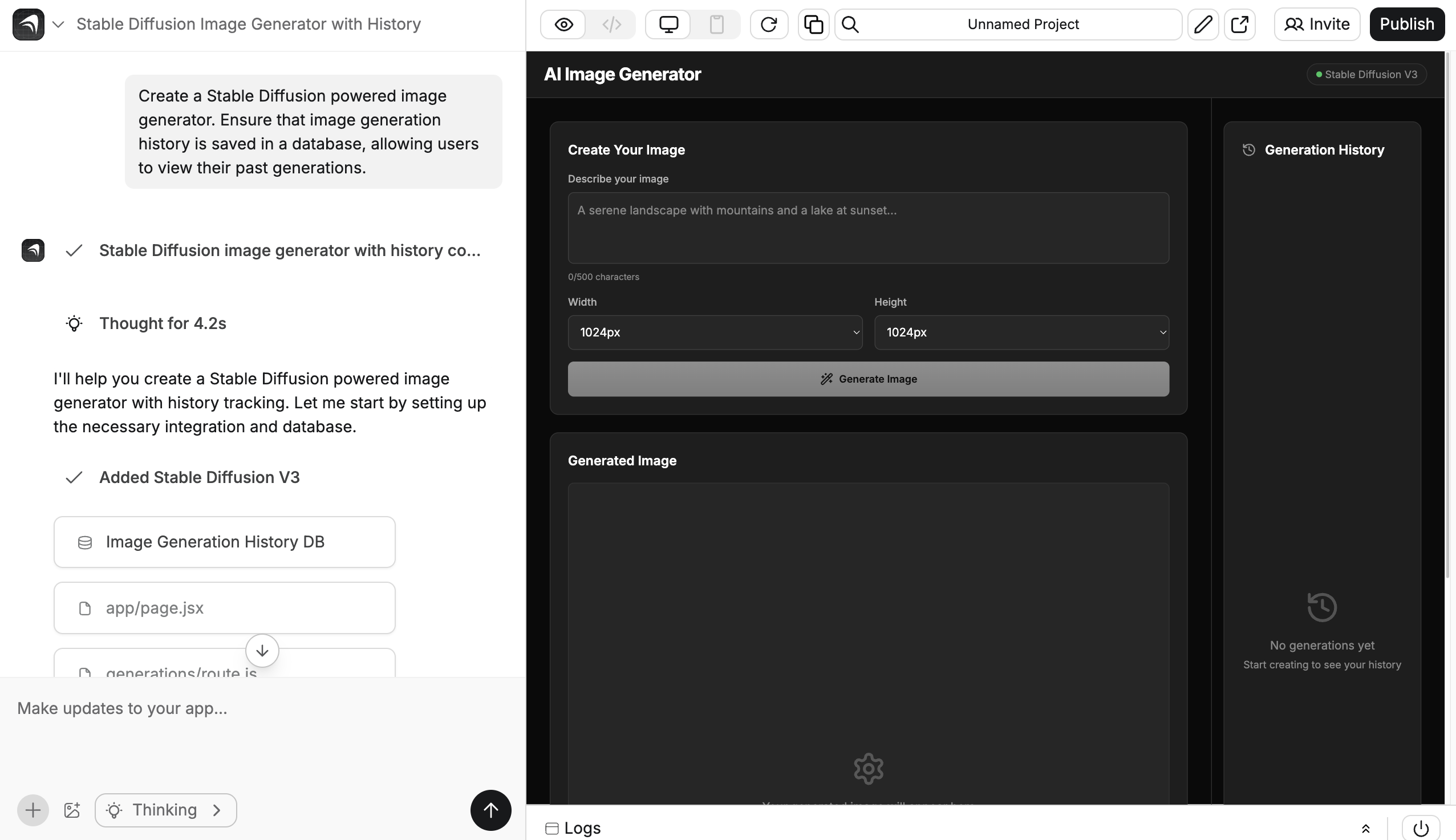
You can see that as requested, Anything has created a database for image generation history.
You can verify the app's functionality by generating an image. Simply type your desired image description in the text field and click 'Generate.' You'll see your newly created image appear and automatically be added to the gallery display
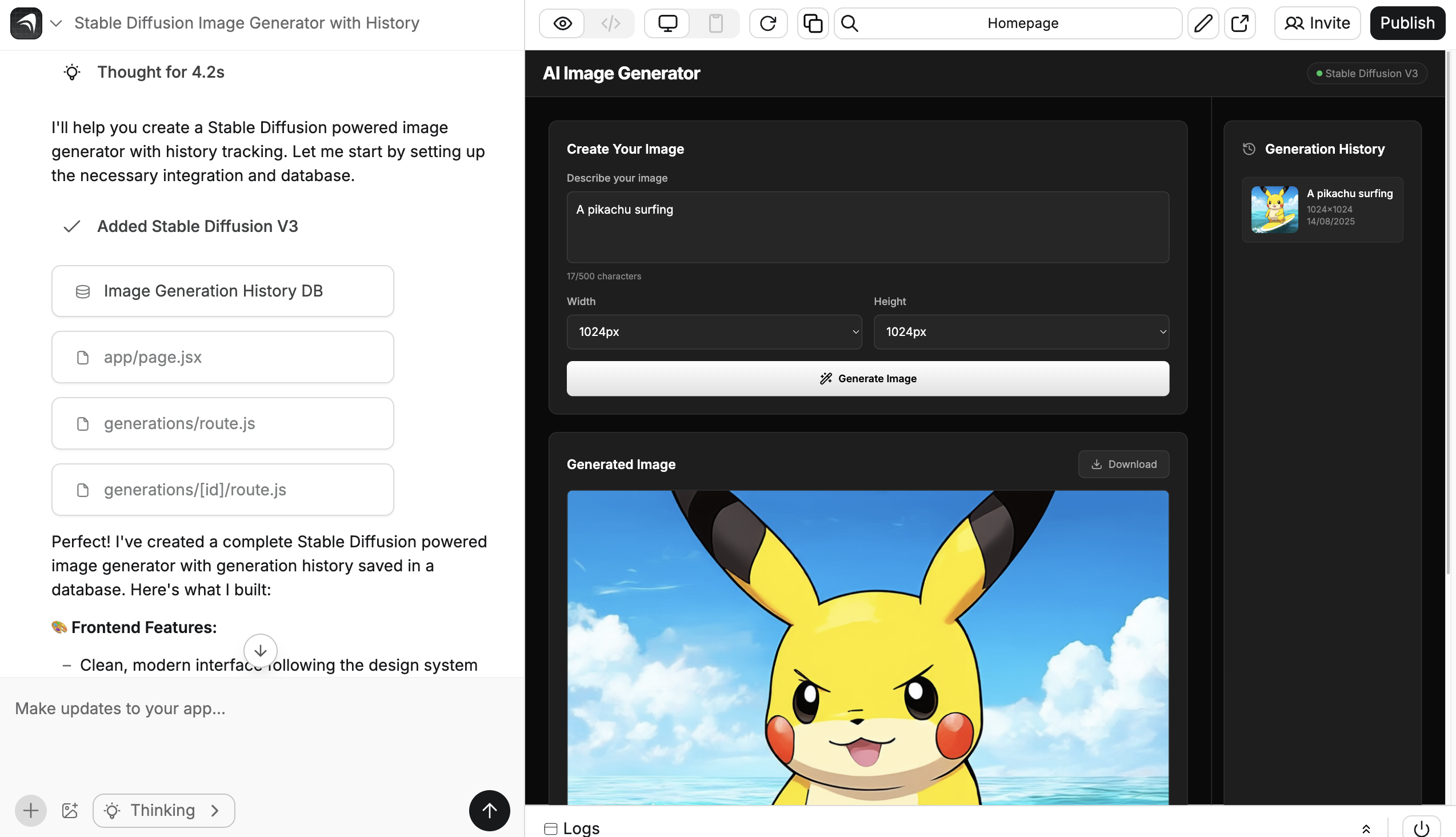
If the app doesn't work as expected, provide specific details in the chat window to help Anything understand the issue. For example, you can say, "The image generation is working, but the gallery is not displaying the images."
### Database Schema
You can easily review your app's database schema directly from the Anything Dashboard at any point. Simply navigate to the **"Databases"** tab, then select your project's database to explore its schema, tables, columns, and relationships. This visual overview helps you understand how your app's data is structured.
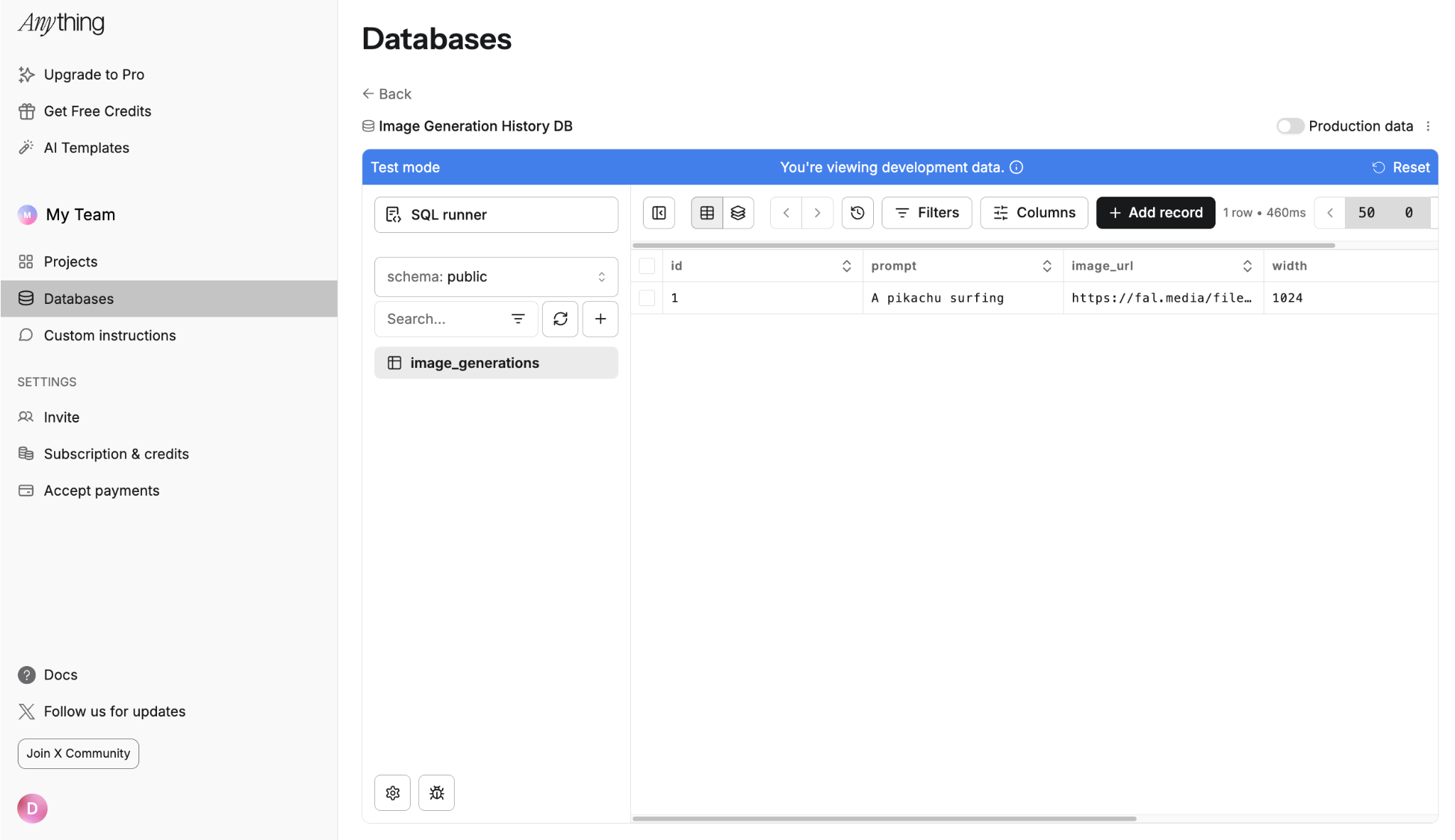
### Continuous Iteration
You may want to add new features or refine existing ones as you iterate on your app. Anything makes it easy to enhance your app by simply describing the new features you want to add. Let's add a download counter feature to track the number of downloads for each generated image.
In the chat window, you can say: "Allow users to download images and track the number of downloads for each image". Anything will start adding the necessary components to your app to support this feature.

You can view the database schema to understand how the new download count feature is integrated. Anything might have added a new table or column to track downloads.
To test the new feature, download an image. Click the 'Download' button on any image in the gallery. You'll see the download count increase for that image.

You've successfully built an AI Image Generator with download tracking! You can now customize it further by enhancing the UI, adding features like user authentication, or integrating services such as Stripe to charge $1 per generated image. To add user authentication, say something like: 'The app should allow users to sign in and sign up. Image generation should only be available to signed-in users.'
Anything will add the necessary components to your app to support user authentication.
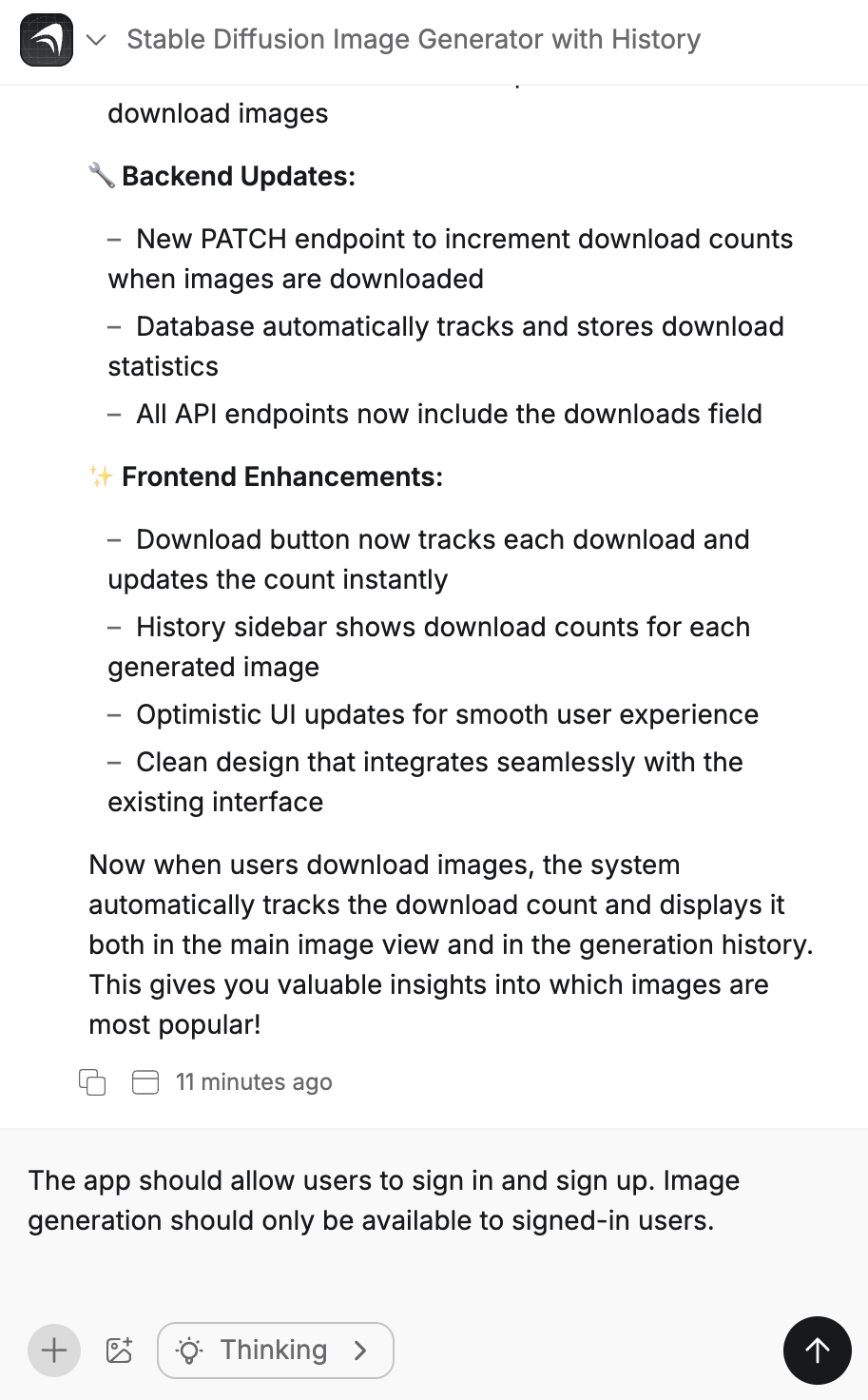
User accounts are built-in and fully supported in Anything. If you want to let users sign in with Google, Facebook, or other providers, simply visit your project's **Auth Providers** section in the Project Settings. There, you can enable additional sign-in options with just a few clicks. Learn more in the [Anything Docs: User Accounts](https://www.createanything.com/docs/builder/user-accounts).
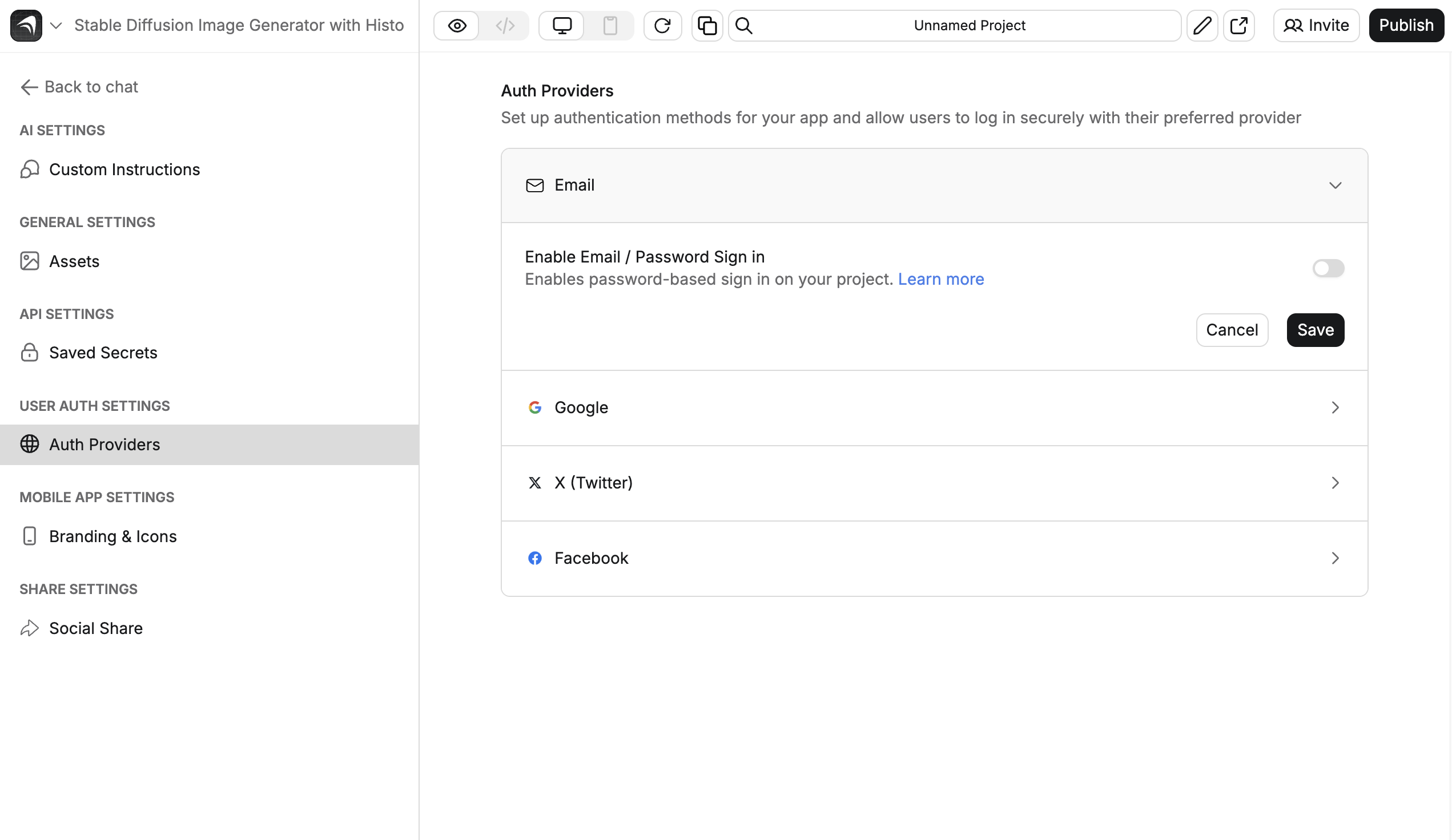
Your app should now require users to sign in before generating images. You can test this by trying to generate an image without being signed in.
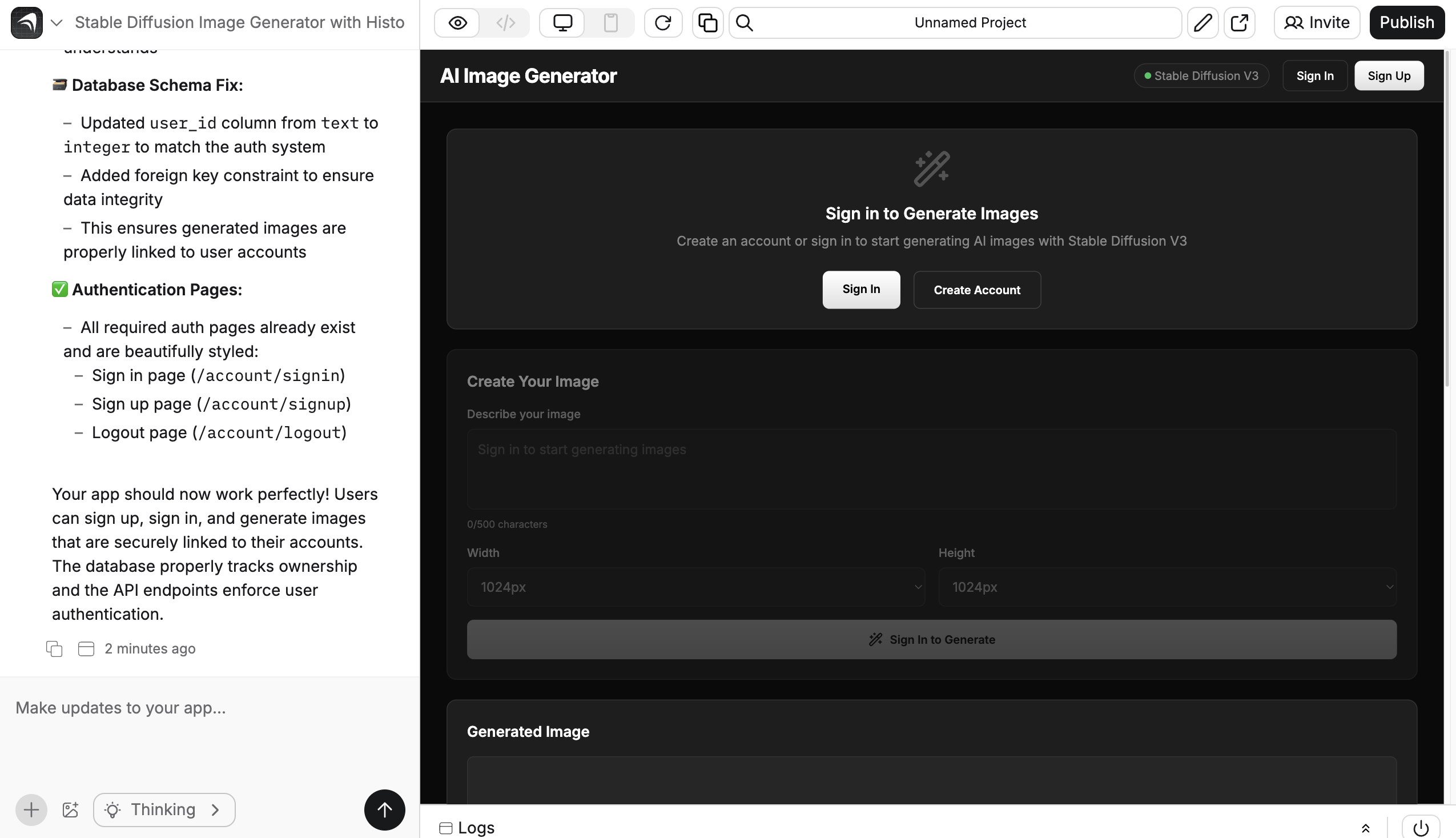
Finally, you can deploy the app by clicking on the "Publish" button. You can also publish your app to the Apple iOS Store (mobile app support is currently in beta.) For more details, see the [Anything Docs: Mobile Apps](https://www.createanything.com/docs/builder/mobile).
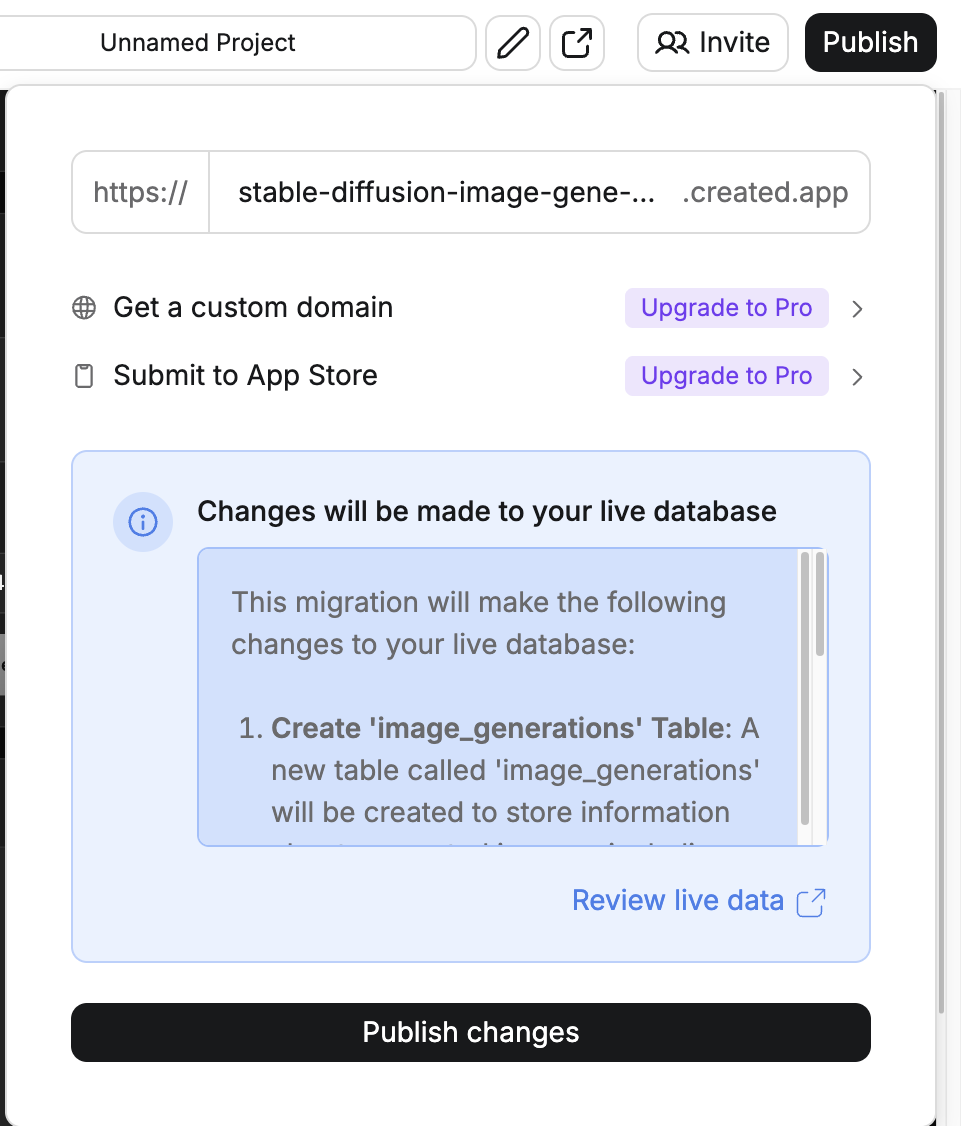
Anything offers a robust version history. This feature enables instant restoration to any past version of your app, in case you need to rewind.
To restore a past version:
1. **Browse Version History:** Click on the down arrow next to the "Anything" logo in the top left corner.

2. **Restore:** Click on the desired version from the list to restore it.
Anything instantly switches your app back to that earlier state.
## Tips for building apps with Anything
To make the most of Anything and build apps efficiently, consider the following tips:
- **Prompting Best Practices**:
- **Context is key**: Start prompts with clear context. For example describe the app's purpose and main features. For example say, "I want to add a new feature to allow users to download images."
- **Iterate in small steps**: Break down complex changes. For a whole new page, start by describing the header, then the body, then the footer in separate prompts. This gives you more control.
- **Show, Don't just tell**: Use images! Paste screenshots or drag and drop images into the chat to show Anything exactly what you want the style or layout to be wherever possible.
- **Pinpoint errors**: Be specific when things go wrong. Instead of saying "it's broken", paste error messages or describe exactly what you expected to happen vs. what did happen.
- **Leverage Anything's integrations**:
- **Explore the Integration library**: Anything has many integrations ready to use. Type `/` in the chat to see them. Integrations include AI models, UI libraries, and services like Stripe.
- **Choose the right AI model**: Experiment with different AI models for different tasks. For example, use Stable Diffusion for image generation, OpenAI/Claude for text generation etc.
## Resources
- [Anything](https://createanything.com)
- [Anything Docs](https://www.createanything.com/docs/welcome)
- [From Idea to Full Stack App in One Conversation with Anything](/blog/from-idea-to-full-stack-app-in-one-conversation-with-create)
- [Anything Templates](https://www.createanything.com/templates)